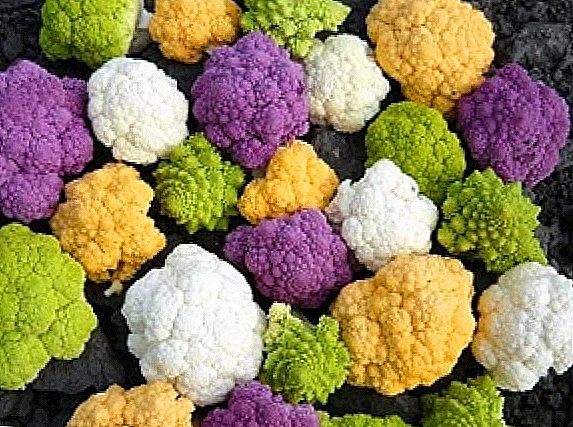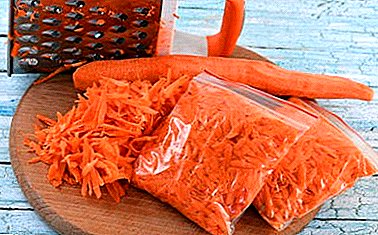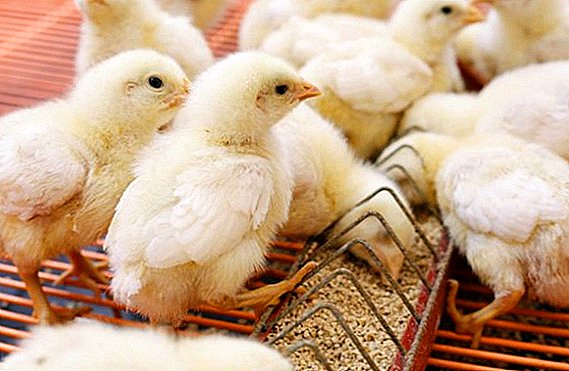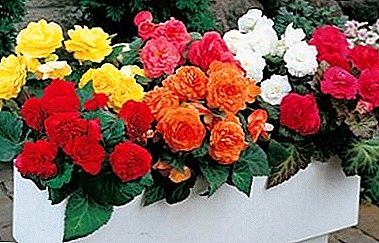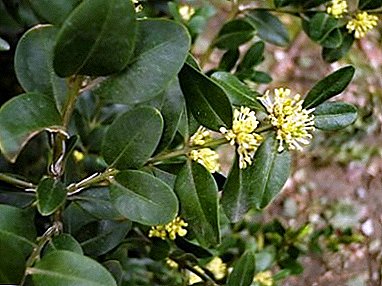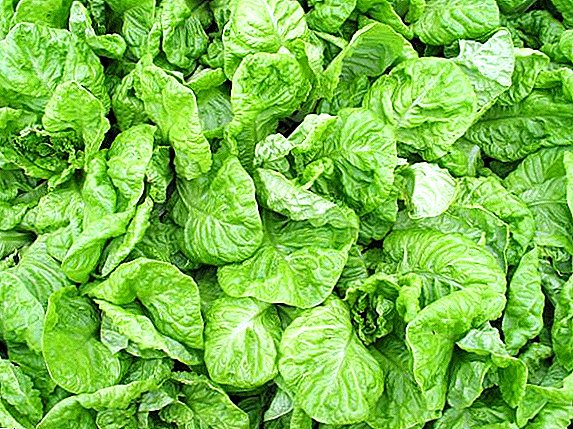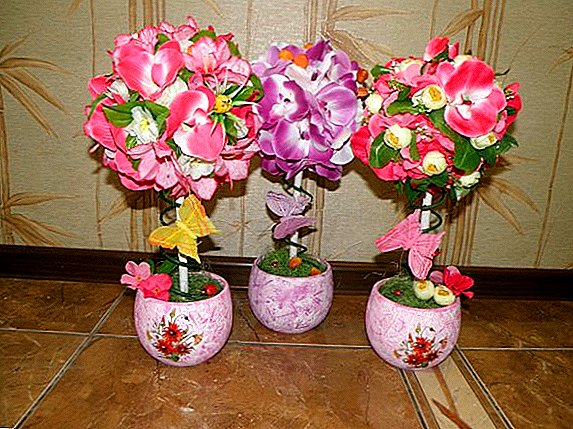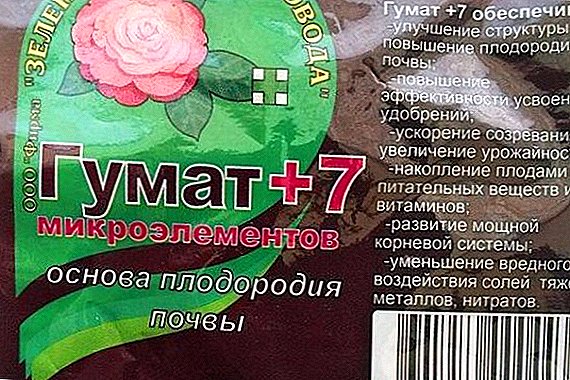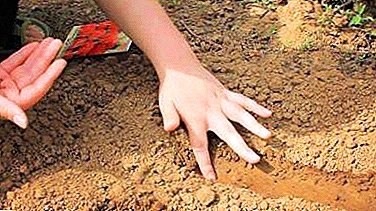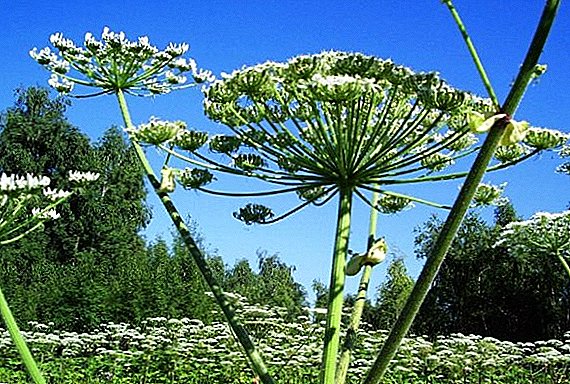 Hogweed - a plant that came to us from the Caucasus more than 70 years ago, actively continues to expand its range, capturing more and more new territories. Summer residents and gardeners claim that the hogweed represents a real threat:
Hogweed - a plant that came to us from the Caucasus more than 70 years ago, actively continues to expand its range, capturing more and more new territories. Summer residents and gardeners claim that the hogweed represents a real threat:
- for cultivated plants in our gardens and fields;
- for people (especially children and old people);
- for local flora and fauna.
Did you know? After habitat destruction, invasive vegetation is the second major threat to the biodiversity of our planet. Every year, 1.4 trillion US dollars is spent on fighting invasive plants in the world.The question of what a hogweed is, what it is terrible for, and how to get rid of it, has become unexpectedly relevant for many of our contemporaries.
What is a hogweed, and how he got to us

Hogweed (Latin name - Herácléum) - representative of a separate genus of umbrella family (more than 60 species). Hogweed plant - biennial (sometimes perennial) plant, blooms only once. Stem ribbed, hollow, purple, from 1.5 to 3 m tall.
Yellow-green trifoliate leaves have a length of up to 1.5 m. The inflorescences (umbrellas) in diameter reach 80 cm. One plant has from 80 to 100 thousand white or pink flowers (bloom in July-August). Seeds ripen from July to September, remain viable for two to three years. The root system is pivotal.
Among horshevikov there are non-poisonous plants (Siberian, dissected, shaggy, etc.) and poisonous (Montegazzi, Sosnovsky).
Did you know? The Roman scholar Pliny called him Hercules due to the rapid growth of shoots and for its size (stems from 3 to 6 m high were recorded). The Russian name comes from the word "borscht" (in the 16th century, this word meant something jagged). Among the plants of this genus are edible - Siberian hogweed. It was from it that a dish was cooked, which got the name borsch because of its main ingredient (with time the hogweed took the place of beets and other vegetables). In Western Europe, hogweed is called "Bear Paw."The most common in our zone was hogweed Sosnovsky (in honor of the scientist who studied this plant in the Caucasus). Distinctive features of the plant:
- unpretentious, frost-resistant, differs in the big survivability;
- due to self-seeding, it strongly litters the fields;
- contains furocoumarins;
- has a sharp and unpleasant smell;
- loves moist soils;
- great honey plant;
- inhibits all other plants.

What is the danger of Hogweed?
The hogweed of Sosnovsky is dangerous for both people and plants. The danger lies in the accumulation of active furocoumarins and essential oils in all parts of the plant.
Did you know? Hogweed Sosnovsky in the USSR since the 1940s was actively cultivated as silage culture. Despite the fact that the plant gave a bitter taste to milk and meat, the experiments were completed (abandoned) only during the period of perestroika.
Consequences for humans can be:
- Burns Hogweed juice causes a sharp vulnerability of the human body to ultraviolet rays. The greatest burns (up to 3 degrees) the juice causes in bright sun, falling on wet skin, penetrating even through matter.
The affected areas redden, itch, the skin swells, blisters appear (often merge into one). Deep defeat threatens with dark pigmentation, scars and scars.
 Burns can occur as soon as the juice gets on the skin, or it can appear after 1-2 days. If you do not take action in time - there are headache, nausea, dizziness (up to loss of consciousness).
Burns can occur as soon as the juice gets on the skin, or it can appear after 1-2 days. If you do not take action in time - there are headache, nausea, dizziness (up to loss of consciousness).Especially vulnerable are old people, children, blondes and red-haired people. Much also depends on the sensitivity of the skin;
- Allergy. Essential oils can cause allergic reactions (sneezing, coughing, rashes, tearing, in the worst cases, laryngeal edema);
- Blindness when getting juice in the eyes.
Consequences for plants:
- the juice with essential oils remains in the stems of the hogweed, infiltrates the soil and inhibits the germination of plants of other species, providing its own seeds with nutrients;
- tall stems with wide leaves do not leave sunlight to competitors (catch up to 80% of light).
First aid for burns
If the juice of hogweed got on your skin, you must:
- Clean the affected area with plenty of water (if possible - with laundry soap).
- Dab the damaged area of skin with vodka, cologne, furatsilina or manganese.
- Treat with panthenol.
- Limit sun exposure.
- Go to the doctor.
Important! For large lesions, blistering or juice falling into the eyes and mucous membranes - you should immediately consult a doctor.It is not recommended to apply dressings to a burn with a hogweed, the treatment is prescribed as with burns.
If a small area of skin has suffered, and you are far from home, you need to hold the affected place under running water for about 20 minutes, then cover the burn with a thick cloth from the sun and go home immediately, with a large lesion area - to the hospital.
Precautions when working with hogweed
It is necessary to fight parshevik in compliance with safety rules. Hogweed is a dangerous rival, and before you start to fight with it, you need to take care of the appropriate equipment: 
- waterproof suit with a hood;
- rubber gloves and boots;
- protective glasses;
- respirator.
Important! When fighting with cow parsnip, wearing gloves made of cloth is not recommended, because the sap of the plant (and even dew from it) will soak the cloth and harm you. You can get burned and through a shirt, t-shirt and other woven items.
How to cope with cow parsnip at the dacha, how to fight
With regular care of the dacha or garden, finding a young sprout of hogweed, it can be easily neutralized. If the garden is running, and thickets of this plant were formed, the struggle will not be so easy.
 Do not delay - hogweed will actively multiply and occupy new spaces.
Do not delay - hogweed will actively multiply and occupy new spaces.
How to deal with the Hogweed, we will tell many years of experience gardeners and summer residents.
Pruning buds
Fighting cow parsnip at a small dacha by cutting the buds is the best way. Capturing the trunk with a rubber glove hand, you need to cut the buds and flowers of the central umbrella.
Do the same with umbrellas of the second order (if available) - cut them under the base. Depriving the plant flowering, you get rid of hundreds of thousands of seeds.
This method has disadvantages:
- most dangerous. When pruning, juice and dew can splash or drip onto the head, face, hands;
- in the presence of large thickets requires a lot of effort.
Burning plant
 If the time of flowering was missed and the seeds are tied, use an effective method - burn the plants together with the seeds when they mature. Tightening should not be done either - the seeds should not ripen in the central umbrella.
If the time of flowering was missed and the seeds are tied, use an effective method - burn the plants together with the seeds when they mature. Tightening should not be done either - the seeds should not ripen in the central umbrella.
Removal of the Hogweed by this method requires maximum observance of precautions:
- gently pour kerosene or gasoline umbrellas with seeds;
- set fire in windless weather and be ready if the flame starts to move to other plants (have a spade, water);
- burning essential oils will cause acrid smoke that can be poisoned (have respirators, gas masks);
- be protected from getting hogweed juice on the skin.
Plowing and weeding
In early spring, dumping plowing will help to cope with hiberovatting winters. If the surviving plants begin to grow from the roots - repeat the plowing. In the autumn, plowing against hogweed is contraindicated - the remaining seeds will fall into the ground and germinate.
You can go to the "hunt" with a shovel for the young shoots of hogweed. To cut down the shoots should be below the point of growth (5-10 cm below the root collar). Weeding every 3 to 4 weeks (hogweed throw shoots in the spring and summer) also gives a good result.
Mowing bears fruit only before the flowering of the plant (used when the hogweed is extensive). All mowed stalks are burned in heaps.

Modern agrotechnical actions, such as covering film, artificial turf, etc., will help get rid of hogweed at the site:
- in the spring, cover the entire area affected by hogweed with a black film, press down with a load and leave until June. The lack of light and the greenhouse effect will destroy the plants. In June, remove the film and plow the area;
- in the spring, mow weeds on a plot, spread out a geopolit, sprinkle fresh earth (5 cm) and plant lawn grass.
Did you know? The natural enemy of a hogweed is the horstewed or umbrella moth. Moth larvae gnaw through the trunks of plants, fall into the inflorescences along the trunks and devour the flowers before they bloom.
Herbicides from Hogweed
Another popular answer to the question of how to remove a hogweed from a plot is herbicides. Apply herbicides:
- spraying (Roundup, Tornado, etc). It is necessary to use drugs from emergence of shoots of a hogweed until flowering period (later it will be late). For the Hogweed, double the concentration of herbicides should be used (the plant is very tenacious). For 14 days you need to do two treatments;
- graft. It is done in the stem of the hogweed (arboricide), in the stump of the stem (vinegar, any herbicide) - for single plants;
- individual treatment with glyphosate herbicides. The solution is applied to the leaves with a paint brush (up to 80% of the plant area). 100% result is combined with a minimum of risk of harm to surrounding cultivated plants.

Important! During spraying with herbicides, the preparations should fall into leaf rosettes and umbrella inflorescences.
Hogweed in the country, which can not be done categorically
When destroying a hogweed at the dacha, it’s absolutely impossible:
- mowing plants after flowering - the effect will not be, and at this time there is the most likely to get burns from splashing juice;
- mow after ripening seeds - the seeds will scatter around;
- leave mowed plants dry. Seeds can "reach" and give offspring. Mowed plants - burn;
- neglect security measures.


 Burns can occur as soon as the juice gets on the skin, or it can appear after 1-2 days. If you do not take action in time - there are headache, nausea, dizziness (up to loss of consciousness).
Burns can occur as soon as the juice gets on the skin, or it can appear after 1-2 days. If you do not take action in time - there are headache, nausea, dizziness (up to loss of consciousness).